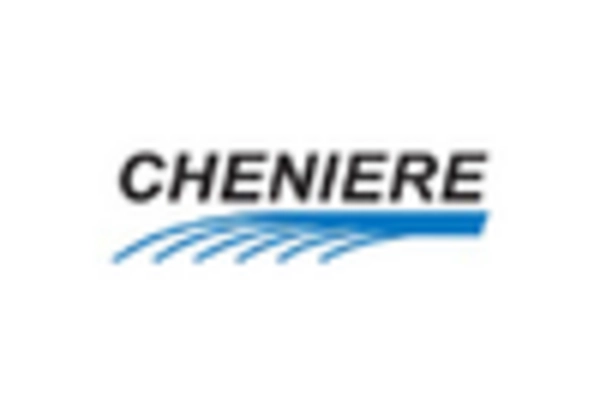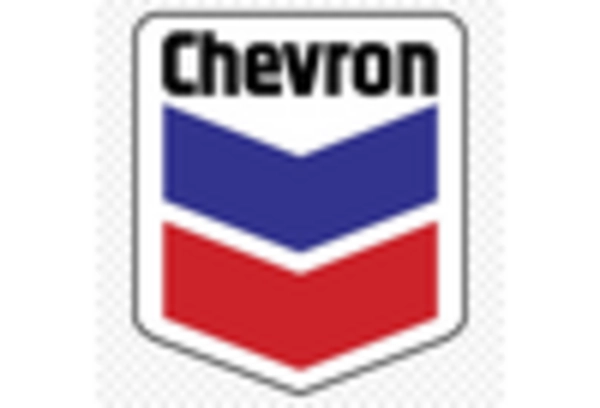Rising Natural Gas Consumption
The LNG Terminal Market is significantly influenced by the rising consumption of natural gas across various sectors. As industries and power generation facilities increasingly adopt natural gas due to its lower emissions compared to other fossil fuels, the demand for LNG terminals is expected to rise correspondingly. Data indicates that natural gas consumption is anticipated to increase by approximately 3% annually, driven by the industrial and residential sectors. This trend is likely to necessitate the expansion of LNG terminal capacities to accommodate the growing supply chain requirements. Consequently, the LNG Terminal Market is positioned to capitalize on this rising demand, leading to enhanced infrastructure development and operational capabilities.
Increasing Demand for Clean Energy
The LNG Terminal Market is experiencing a notable surge in demand for cleaner energy sources. As countries strive to reduce carbon emissions and transition to more sustainable energy solutions, liquefied natural gas (LNG) emerges as a viable alternative to coal and oil. This shift is driven by governmental policies promoting cleaner fuels, which are expected to enhance the LNG terminal infrastructure. According to recent data, the demand for LNG is projected to grow at a compound annual growth rate of approximately 5.5% over the next decade. This growth is likely to stimulate investments in LNG terminals, thereby expanding their capacity and operational efficiency. Consequently, the LNG Terminal Market is poised for significant growth as it aligns with global energy transition goals.
Geopolitical Factors and Energy Security
Geopolitical dynamics significantly impact the LNG Terminal Market, as nations seek to enhance their energy security through diversified energy sources. The volatility of oil prices and the desire to reduce dependency on specific suppliers have prompted countries to invest in LNG infrastructure. This strategic shift is evident in regions where energy diversification is critical for national security. For instance, countries are increasingly looking to establish LNG import terminals to secure stable energy supplies. The ongoing geopolitical tensions may further accelerate investments in LNG terminals, as nations prioritize energy independence. Thus, the LNG Terminal Market is likely to experience growth driven by these geopolitical considerations, fostering a more resilient energy landscape.
Regulatory Support and Policy Frameworks
The LNG Terminal Market benefits from supportive regulatory frameworks and policies that encourage the development of LNG infrastructure. Governments are increasingly recognizing the strategic importance of LNG in achieving energy security and environmental targets. Incentives such as tax breaks, subsidies, and streamlined permitting processes are being implemented to facilitate the construction and operation of LNG terminals. For instance, several countries have established national energy strategies that prioritize LNG as a key component of their energy mix. This regulatory support not only enhances the attractiveness of investments in LNG terminals but also fosters a conducive environment for innovation and technological advancements within the industry.
Technological Innovations in LNG Processing
Technological advancements play a crucial role in shaping the LNG Terminal Market. Innovations in LNG processing, storage, and transportation technologies are enhancing the efficiency and safety of terminal operations. For example, the development of floating LNG terminals has revolutionized the industry by allowing for more flexible and cost-effective solutions. Additionally, advancements in cryogenic technology are improving the energy efficiency of LNG liquefaction processes. These innovations are expected to reduce operational costs and increase the competitiveness of LNG as a fuel source. As a result, the LNG Terminal Market is likely to witness increased investment in cutting-edge technologies that optimize terminal performance and reduce environmental impact.



















Leave a Comment